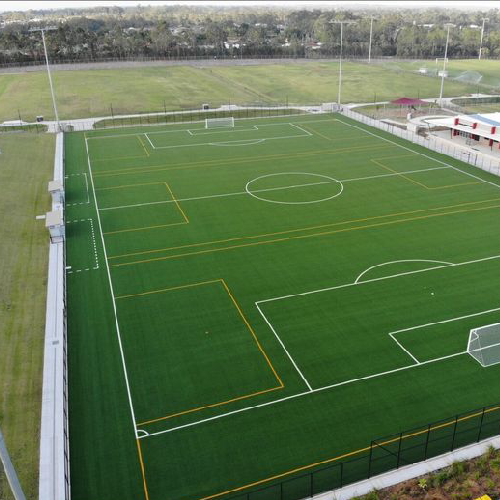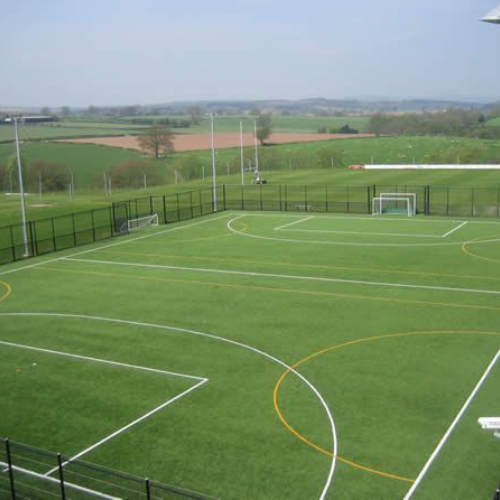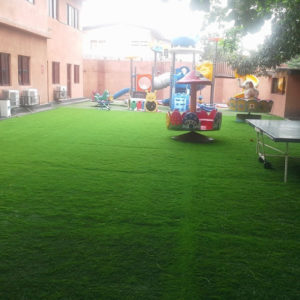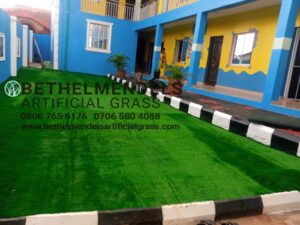Introduction TO Artificial Turf For Hockey Fields
Hockey is a fast-paced, competitive sport that requires a high-quality playing surface. The condition of a hockey field has a significant impact on player performance and safety. Artificial turf for hockey fields has become very popular in recent years and has many advantages over traditional natural turf. In this comprehensive guide, we take a look at the main benefits of using artificial turf for hockey rinks and how this modern solution can revolutionize the game.

Consistent Playing Surface
One of the biggest benefits of artificial turf on hockey fields is its stability. Natural grass is uneven, with mud spots, dry patches, and irregular growth that can affect ball movement and a player’s stance. Artificial grass provides a completely flat playing surface, allowing the ball to roll smoothly and players to perform at their best.
Artificial Turf For Hockey Fields Improved Performance
Fake grass is designed to resemble the best characteristics of natural grass while eliminating its drawbacks. Flat surface and optimal traction allow for more precise ball control and faster gameplay. Players can rely on the predictability of the surface to improve their skills, making artificial turf the preferred choice for both professional and amateur hockey teams.
Artificial Turf For Hockey Fields Enhanced security
Player safety is a top priority in any sport, and hockey is no exception. Artificial grass pitches are intended to reduce the risk of injury. Unlike natural grass, which can become slippery when wet, artificial grass provides excellent grip in all weather conditions. Additionally, the shock-absorbing properties of artificial turf reduce the impact on players’ joints, reducing the chance of injury from falls and collisions.

Low Maintenance
Maintaining a natural grass hockey rink can be time-consuming and expensive. Regular mowing, watering, fertilizing, and pest control are required to keep it in good condition. However, artificial grass requires minimal maintenance. No watering, mowing, or chemical spraying required. Simple brushing and occasional cleaning is enough to keep artificial turf looking and performing at its best, saving sports facility managers time and money.
Durable And Long Lasting
Artificial grass is designed to withstand heavy use and inclement weather. Even with constant play and minimal maintenance, it will remain in excellent condition for many years. Unlike natural grass, which wears and develops bald spots, synthetic grass maintains its integrity and aesthetics, providing a long-lasting solution for your hockey field.
environmental benefits
Using artificial turf for hockey fields also has environmental benefits. No irrigation is required, saving large amounts of water, making it an environmentally friendly choice. Additionally, avoiding pesticides and fertilizers reduces chemical runoff that can have a negative impact on the environment. Many of the latest artificial turf products are made from recycled materials, further contributing to sustainability.
Playability in all weather
One of the great attributes of artificial turf is that it provides an optimal playing surface regardless of the weather. Natural grass pitches can become wet and muddy during heavy rainfall, or dry and hard during drought, which can lead to abandoned matches and poor playing conditions. The artificial turf pitch has efficient drainage and can be played all year round, allowing ice hockey matches and training sessions to take place without interruptions due to weather.

Artificial Turf For Hockey Fields Cost-effectiveness
Although the initial installation cost of artificial grass may be higher than natural grass, it saves you money in the long run, making it a cost-effective option. Artificial grass has low maintenance costs, lower water bills, and a longer lifespan, which can lead to significant cost savings in the long run. Additionally, a consistent playing surface reduces the chance of injury and potentially reduces medical and insurance costs for teams and sports facilities.
versatility
Artificial turf is extremely versatile and can be installed in a variety of environments, from professional stadiums to school grounds and community centers. Its adaptability makes it perfect for different levels of play and different environments. Additionally, artificial turf can be customized in color and markings to suit a hockey field’s specific needs, improving the overall aesthetics and functionality of the playing area.
Conclusion
In conclusion, the uses for artificial turf on hockey fields are numerous and appealing. From providing a consistent and safe playing surface to reducing maintenance costs and environmental impact, artificial turf is changing the way hockey is played. The use of artificial turf in hockey arenas is expected to continue to increase as more teams and sports facilities realize these benefits, providing both better performance and more enjoyable enjoyment for players and fans.







